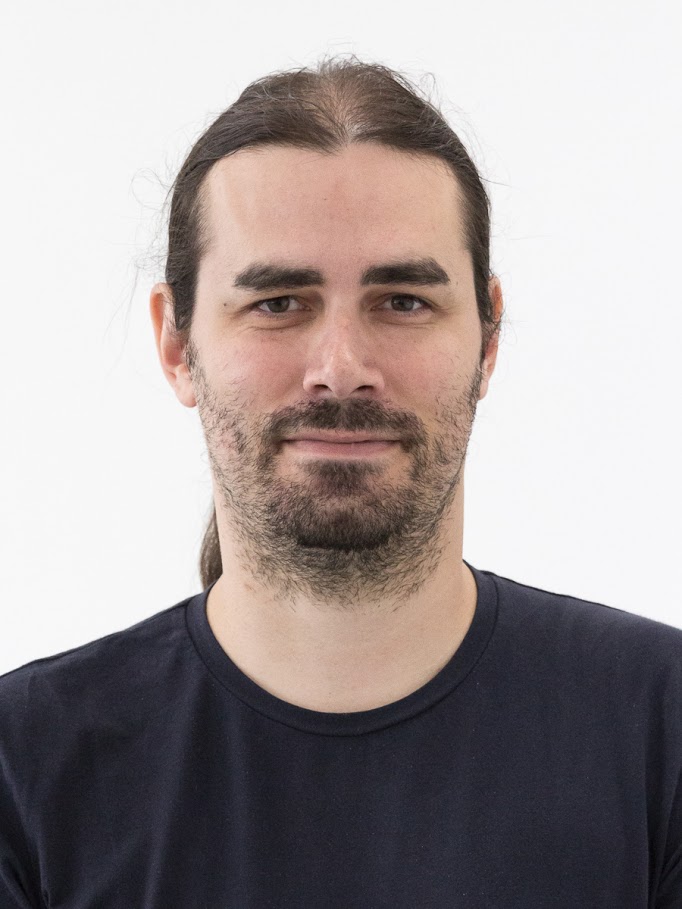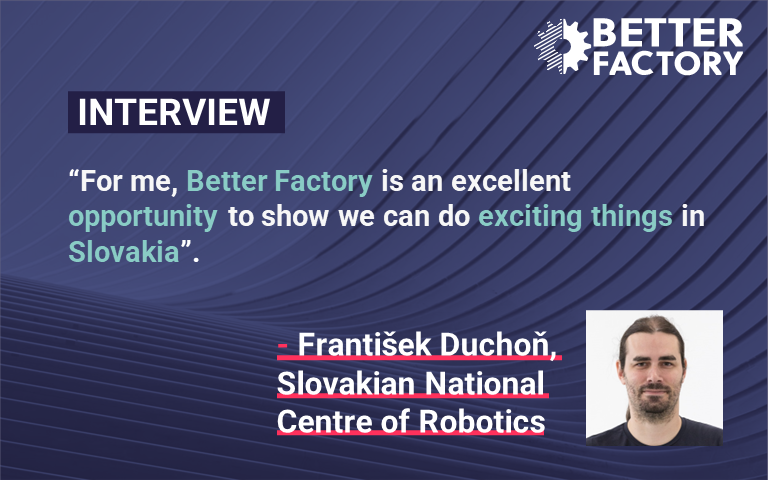Welcome to our interview series with the partners running Better Factory. Today we are lucky to be joined by one of our all-star team, František Duchoň, to learn more about the Slovakian National Centre of Robotics and their role in the project!

František Duchoň is a founder of the Slovakian National Centre of Robotics, one of the partners of Better Factory, as well as a professor of Cybernetics at the Slovak University of Technology. He obtained Prof. in 2018 at Slovak University of Technology in the area of Cybernetics, and has been involved in 21 research projects (in 11 as a leader of the project or as a leader of the partner), is an author of almost 200 publications, 51 indexed in WoS and 56 indexed in SCOPUS.
František was also part of the team that won the price for technology transfer in Slovakia in 2015, and is member of workgroup for Digital Slovakia and creative industry under the patronage of Deputy Prime Minister for Investments and Informatics.
Thank you for joining us today František! Please could you give us a short introduction to the National Centre of Robotics (otherwise known as Nacero, or NCR), in your own words, and what your role is there?
National Centre of Robotics is an association established under the Faculty of Electrical Engineering and Information Technology patronage, at the Slovak University of Technology in Bratislava.
The National Centre of Robotics was established for several reasons – research, support, and development of robotics in university and society-wide environments. We are currently working with several universities and commercial companies (especially SMEs) and supporting students in research activities.
The members of the National Centre of Robotics are internationally accepted professionals in robotics, cybernetics, and automation from Slovakia. I am the current President of the association.
For me, Better Factory is an excellent opportunity to show we can do exciting things in Slovakia.
Thank you! To someone reading this who has never heard of Better Factory before, how would you describe it in simple terms, and why do you feel it is significant?
For me, Better Factory is an excellent opportunity to show we can do exciting things in Slovakia. In the project, we created a module that can determine the optimal number of logistics agents of various types based on the parameters of the specified logistic (they can also be downloaded from the digital model).
We are delighted that it is already implemented in the Logistics Library, and other functionalities are still being prepared. We believe that this will help the KTE partners set up their logistics better and use their resources more efficiently. The National Centre of Robotics plays a key part in providing tech-based support for the teams during their KTEs (Knowledge Transfer Experiment).
Could you tell us about what you foresee for this round of participants and what challenges you expect them to come up against?
As I mentioned, we are in charge of the entire Logistics Library development previously developed in the L4MS project. It’s an excellent experience for us. We have already led larger teams, but they were just national. Better Factory is an international project and being responsible for four internationally established development teams is a great experience. Each country has its specifics and way of working. It is exciting to be responsible for this. From this point of view, I do not envy the coordinator of the entire Better Factory project 🙂
For the current KTEs, I see the most critical task being teaching the company to use the Logistics Library. The second important thing is to create modules that will be useful and not in commercially available tools. For example, the optimization module just mentioned is one of these. As one of the project’s technical partners, could you tell us what you see for the future of the RAMP platform for its long-term development after the project has ended?
I see the positiveness of RAMP mainly in its openness. If you are a developer, you can come to RAMP and offer your solutions to the broader community. You do not need to build your customers’ network. Of course, you have to adapt your development to RAMP, but you can gain a lot from it. And if you are a company that needs innovative solutions in robotics and automation, where better to find them than from top creative teams from all over Europe.
The most significant challenge is reconciling so many diverse teams to move essentially in one direction.
What will be the most significant technical challenges of the project as a whole, and how do you think they will be resolved?
The most significant challenge is reconciling so many diverse teams to move essentially in one direction. In terms of technology, it will undoubtedly be key to overcome the mistrust of RAMP and show good practices to demonstrate the potential of RAMP. If RAMP does not have customers at the end of the Better Factory project, it will not survive.
No doubt there will be some readers keen to meet you to talk more about the project and your role in it. Which events can people find you at in 2022 and beyond (name, date, location)?
We regularly attend the Automatica event in Munich with a smaller team. Although we expect that about 80% of the technologies will be the same as in previous years, we go there mainly for the meetings and the 20% real innovations. I have also been trying to appear at the European Robotics Forum since we were members of euRobotics, and this year Better Factory will be there. I attend other events somewhat irregularly.
If you’d like to learn more about our partners or KTEs, just head back to the Insights section to read more interviews!

